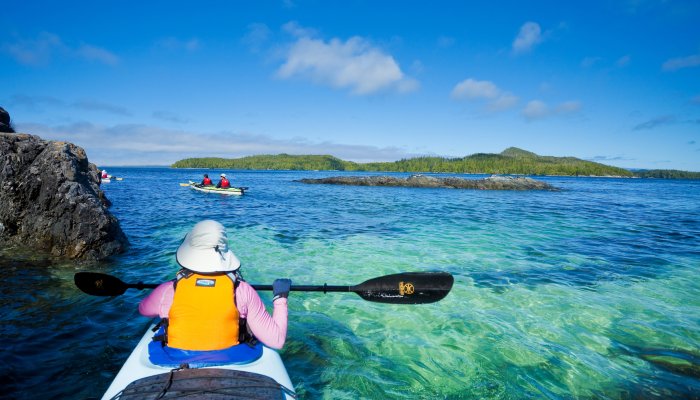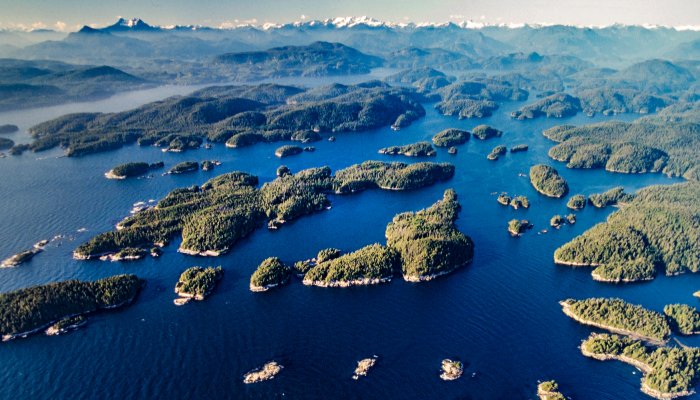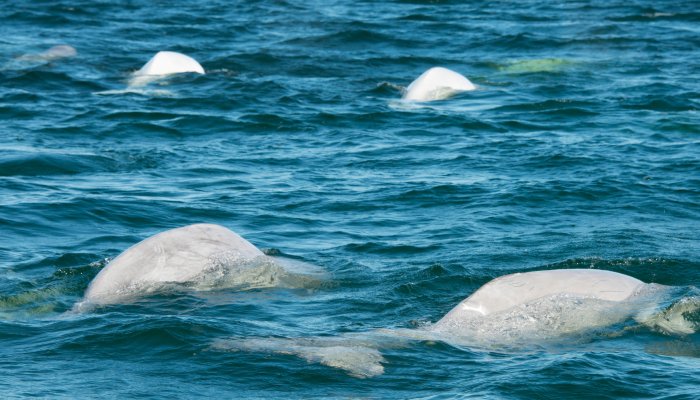Flora Feature - Bullwhip Kelp (Nereocystis luetkeana)
Bullwhip kelp is an annual seaweed that grows in the cold, moving waters of the Northeast Pacific Ocean. It is named for its bullwhip-like appearance when it is washed onto beaches, dries, and turns brown.
As a growing plant, bullwhip kelp forms spectacular kelp forests from Northern California to Southern Alaska, with the rugged coastline of British Columbia offering ideal conditions for its growth. The many streams flowing into the region’s coastal waters bring with them a bounty of nutrients that support the growth of strong and healthy kelp.
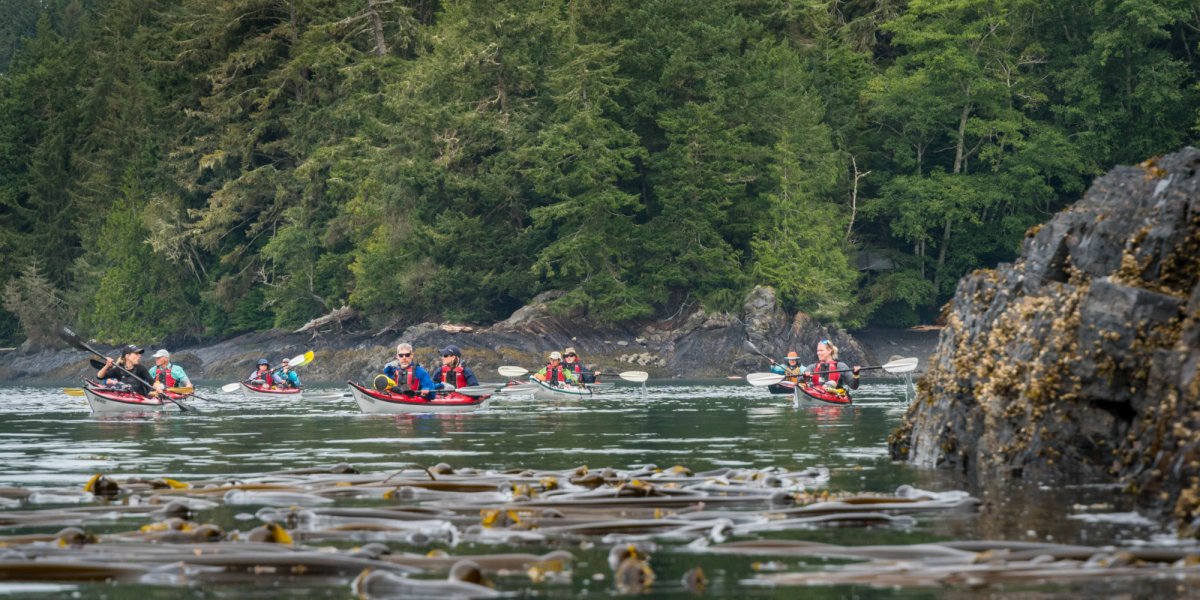
A Sea Kayak Adventures group explores bullwhip kelp during a morning paddle.
Where does bullwhip kelp grow?
Bullwhip kelp is found at depths of up to 100 feet (30 meters) and grows fronds that can reach up to 60 feet (18 meters in length). Their bulbs are designed for buoyancy and contain up to 10% carbon monoxide, which is a byproduct of photosynthesis. Bullwhip kelp also have reproduction patches filled with spores, which will drop to the ocean floor upon maturity. As a result, new plants tend to grow close to their parents.
As an annual seaweed, bullwhip kelp develops from a spore to maturity within a single year and can grow up to 10 inches (25 centimeters) in a single day. While its roots serve as a holdfast anchor, the kelp absorbs food from the surrounding ocean, with sunlight stored as energy within the cells of its fronds.
Despite the fact that it thrives in cold water conditions between 40°F and 70°F (5°C and 20°C), the majority of bullwhip kelp growth occurs during the warm and bright summer months. In autumn, the kelp fronds will release their spores and the plant will die, with the spores generating into baby kelp that will grow throughout the following summer.
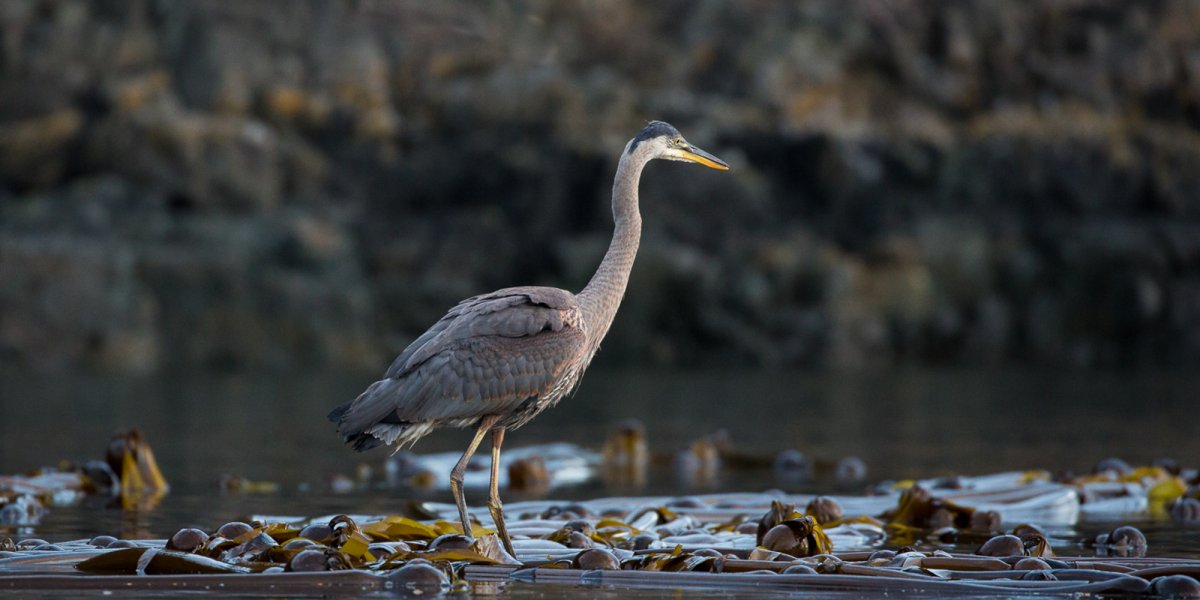
A great blue heron eyes the water surrounding the bullwhip kelp, looking for it's next meal.
Importance of Bullwhip Kelp to the Marine Ecosystem
Kelp forests provide a foundation for diverse marine ecosystems and bullwhip kelp beds are no different. Marine mammals such as sea otters hunt for sea urchins in kelp forests while other species find refuge from strong currents amidst their towering fronds.
Several fish species use bullwhip kelp forests as nurseries for their young while sea urchins actively feed on the kelp. Sea birds frequent the kelp forests in seach of marine nutrients. In the absence of kelp forests, many marine animals would be much more vulnerable to predators, starvation, and the destructive power of storms.
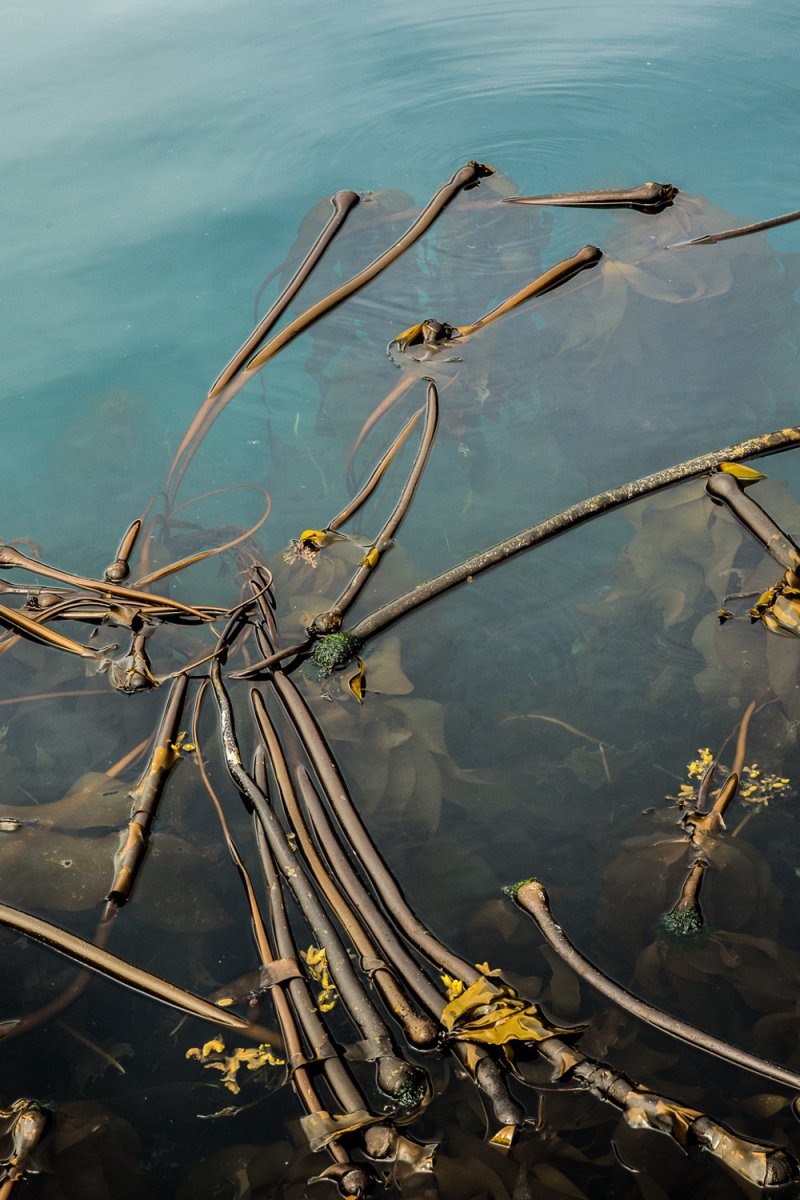
Bullwhip kelp in the Johnstone Strait, British Columbia.
Cultural Importance of Bullwhip Kelp in British Columbia
Historically, First Nations communities have used bullwhip kelp to make lines for anchors and fishing, as well as constructing harpoons and fishing nets from the plant. After being cured with saltwater and dogfish oil, the stipe becomes incredibly strong and can be knotted together to create long lines. In addition, the hollow part of the stipe can function much like a hose or be used to store seal oil and molasses.
Bullwhip kelp has also long been harvested for culinary purposes and can be eaten raw, dried, or pickled. After the fronds are harvested (ensuring the kelp is left intact to continue growing), it can be sliced and eaten or dried and used as a seasoning. Bullwhip kelp contains high concentrations of vitamins and minerals, including potassium, calcium, magnesium, phosphorus, and iodine.
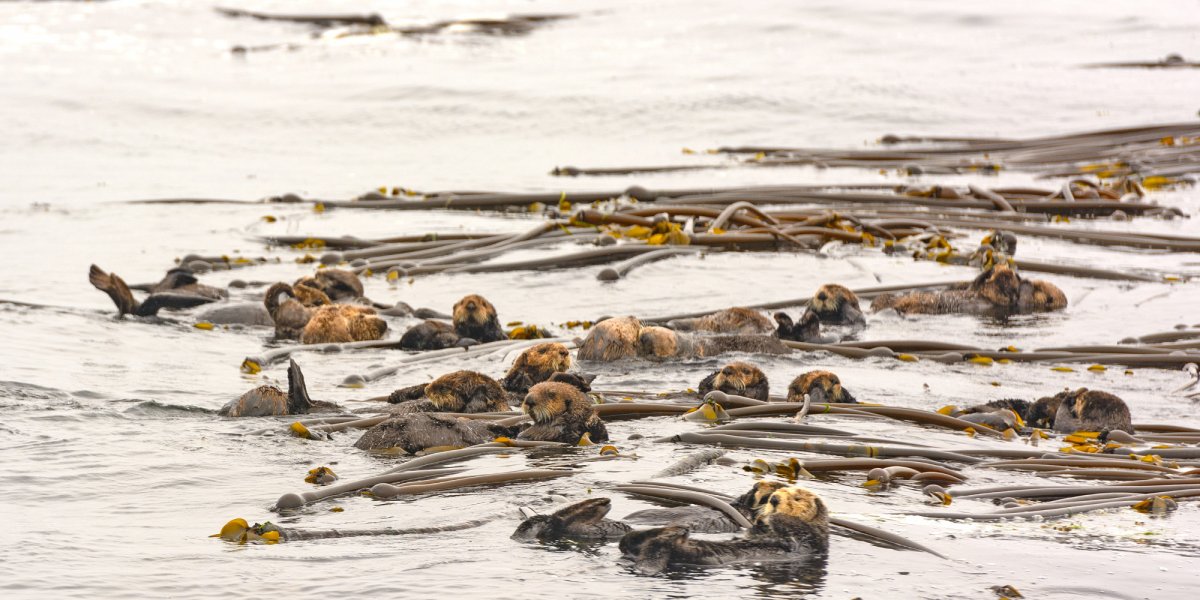
A raft of sea otters floats in a bullwhip kelp bed.
Threats to Bullwhip Kelp
One of the main threats to the survival of British Columbia’s bullwhip kelp forests is climate change, with just the slightest raising of ocean temperatures impacting its habitat distribution. Commercial harvesting of bullwhip kelp that doesn’t allow for regeneration is another threat and the sustainable management of this natural resource is crucial for its survival.
Spikes in sea urchin populations can also have devastating impacts on bullwhip kelp forests and result in what are known as “urchin barrens” - areas of the seafloor that are devoid of plant life and just covered in urchins. This was the case prior to the re-introduction of sea otters to the coastal waters of British Columbia in the 1960s. As British Columbia sea otter populations have increased, they have kept sea urchin populations in check and bullwhip kelp is able to flourish.

